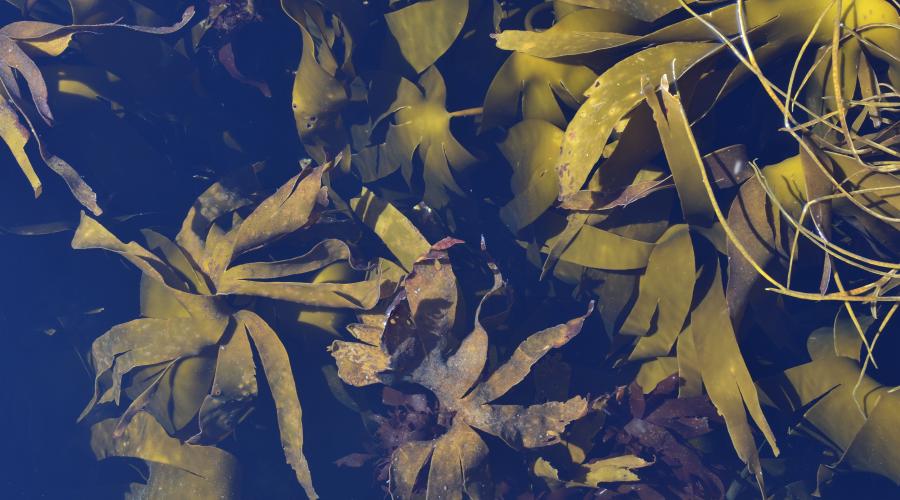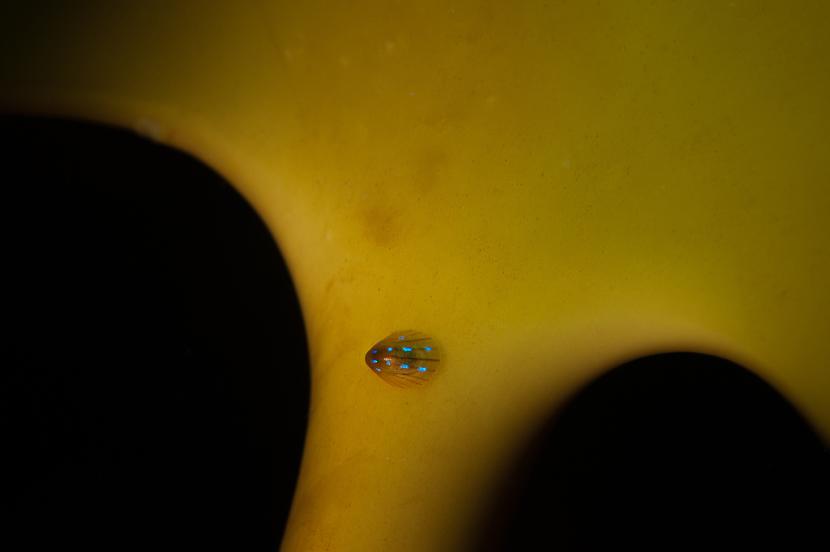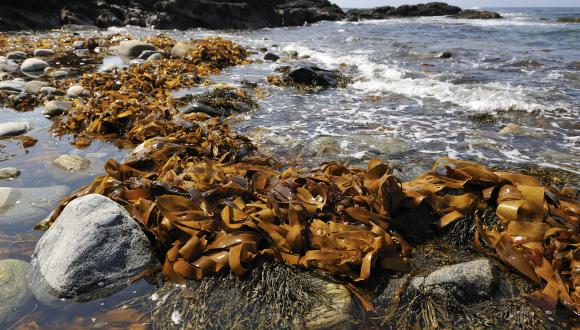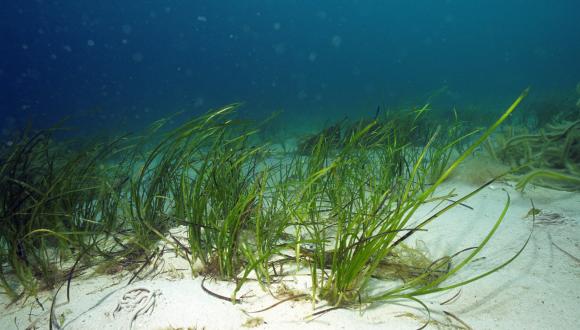
Marine algae
Many species of marine algae or seaweed live around Scotland’s coasts – including kelp, wig wrack and sea loch egg wrack.
The algae that thrive on Scotland’s coasts and in our seas are more commonly known as seaweeds. Kelp and sea loch egg wrack form especially valuable habitats. Marine algae are one of the oldest groups of plants on the planet and they cover many of our shores. You might not expect a primitive plant to thrive in one of the most brutal habitats around. But marine algae fill the nooks and crannies of the shoreline that are washed by the sea.
Marine algae can withstand being:
- pounded by sea storms
- drained by the tide and left to bake in the sun
- dried by the wind
- covered by water that often changes rapidly in salinity

A blue-rayed limpet on kelp at the entrance to a sea cave in St Kilda. ©George Stoyle/NatureScot
Marine algae extend through our shallow seas down to depths where the light finally fades. They provide a habitat and source of food for many of the animals we find on the shore as well as at sea.
Two types of marine algae form especially valuable habitats in our coastal and marine environments. Kelps form dense underwater forests that are among the most productive and dynamic ecosystems on Earth. Beds of sea loch egg wrack – a Scottish speciality – provide a bountiful feeding station and sheltered habitat.
Learn all about Scotland’s kelp beds.
Explore our sea loch egg wrack beds.





